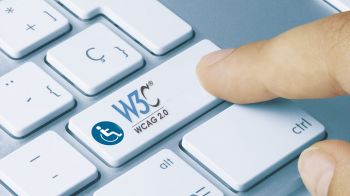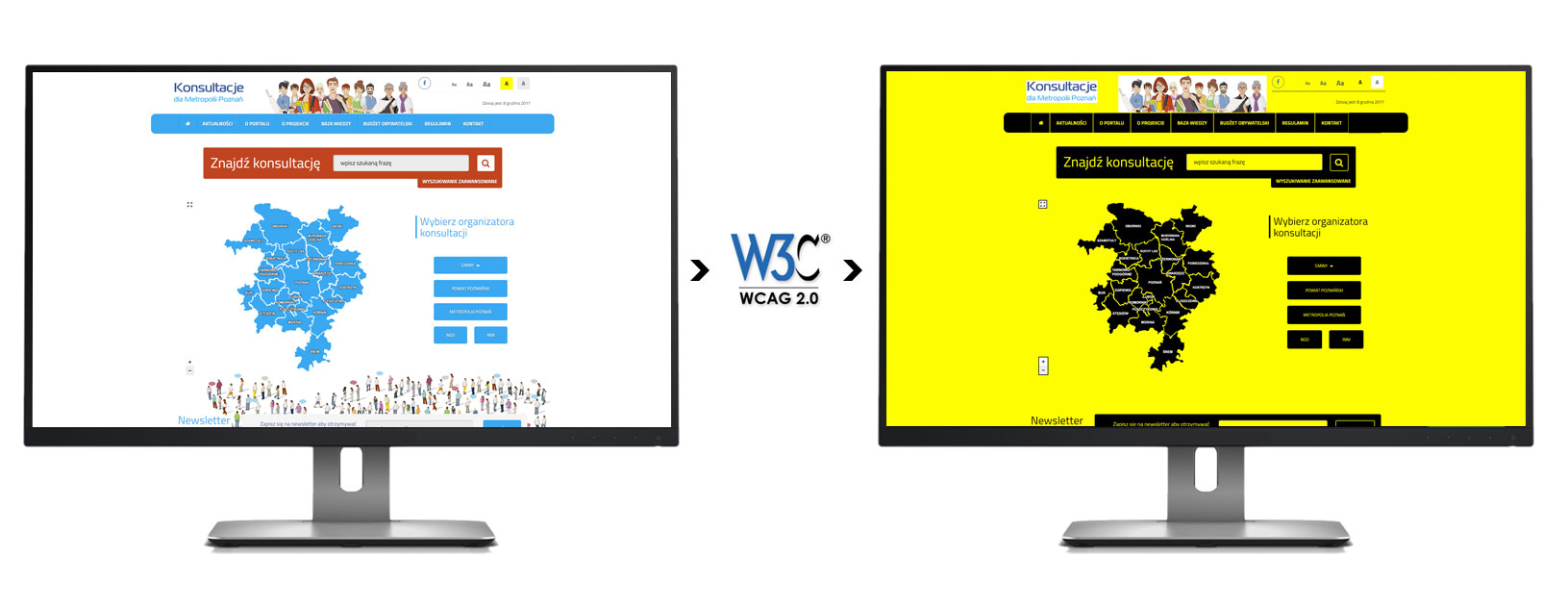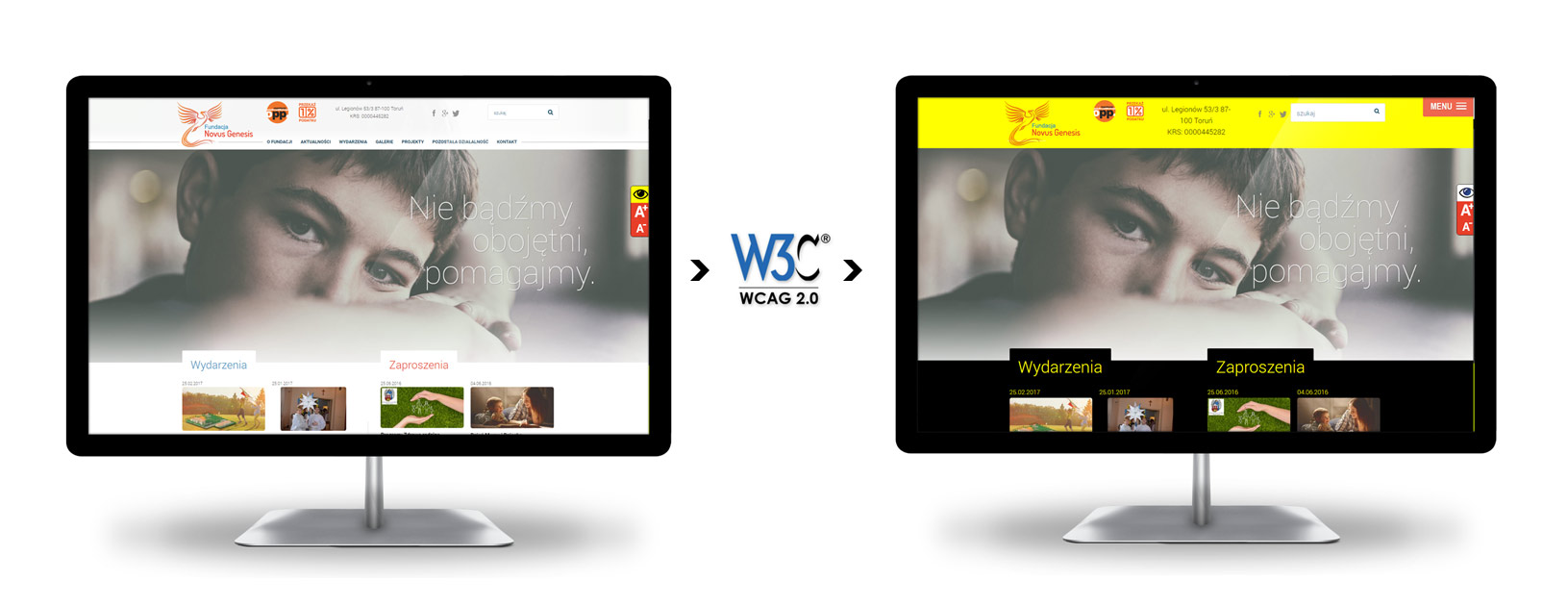WCAG (Web Content Accessibility Guidelines) - is a set of recommendations from the W3C consortium on creating accessible websites for people with disabilities.

Author: webSylium
Publish date: 2019-02-19
WCAG Worldwide
Version 1.0 was created a relatively long time ago - in 1999. The technical document version 2.0 was created in 2008, and as of 2012 WCAG version 2.0 is an international standard signed with the number ISO/IEC 40500:2012.
This is a set of guidelines for the design and operation of a website designed to make it more accessible to people with disabilities. For example:
- enabling keyboard navigation of page elements,
- adding alternative descriptions to graphic elements,
- use of appropriate font size and font contrast to the background for visually impaired people,
- not using animations that can trigger an epileptic seizure,
- appropriate display of content at all resolutions,
- and many other guidelines....
The WCAG documentation is nearly 1,000 typewritten pages, specifying guidelines at various levels, not all guidelines must be implemented to consider a site accessible to people with disabilities.
WCAG in Poland
Od 1 czerwca 2015 roku w Polsce obowiązuje Rozporządzenie Rady Ministrów z dnia 12 kwietnia 2012 roku o Krajowych Ramach Interoperacyjności nakładające na instytucje realizujące zadania publiczne obowiązek dostosowania swoich serwisów WWW do standardu WCAG 2.0 na poziomie AA, obejmuje to m.in:
As of June 1, 2015, the Council of Ministers' Regulation on the National Interoperability Framework of April 12, 2012 is in force in Poland, imposing an obligation on institutions carrying out public tasks to adapt their websites to the WCAG 2.0 standard at the AA level, this includes:
- ministries,
- provincial offices, city and municipal offices,
- police, fire departments, hospitals,
- foundations,
- and many other organizations....
WCAG in webSylium
We implement some of the recommendations from the WCAG 2.0 document as standard, as they coincide with our best practices for responsive implementations that comply with W3C standards, with an emphasis on UX (user expierence) and SEO (search engine optimization) principles.
In addition, in order to find a balance between the original website layout and the WCAG 2.0 compliant layout, we include a mechanism for switching to an alternative layout that takes into account, for example, high contrast and larger fonts.
Examples of services implemented by our team where such a mechanism was used are:



